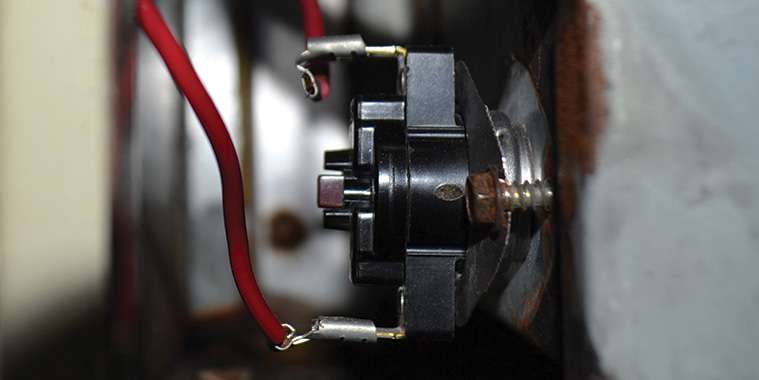By David Square
Normally, I don’t turn on my high-efficiency gas furnace until Halloween, the day when snow and cold weather traditionally consort to paint the ground ghost white and blow the remaining leaves from brambly trees.
However, as Manitobans are aware, this year we received a bitter draft of winter about three weeks ahead of schedule. I don’t know about other DIYers, but I was caught with my overalls down: I had not performed my checklist to ensure my furnace was ready for winter.
My wife and I were busy clearing trees from our driveway when it occurred to me that the furnace was not prepared to face the chill winds to come. (To this point, we had kept our house warm with a small wood heater.) I raced to the back door and made my way to the furnace room, leaving my wife to clean up the remaining trees. (She loves hefting logs into a wheelbarrow and dragging branches to a firepit.)
I removed the furnace’s cover and performed a cursory check of the interior. Everything looked okay, so I washed the reusable filter in the bath tub, using a hair dryer to remove excess moisture. Then I got out the vacuum and sucked dust from various furnace components, while checking for cracked wires and leaking condensation tubes. Satisfied that everything was fine, I placed the now dry air filter back into the furnace and replaced its cover.
I turned up the thermostat to room temperature and waited patiently for that reassuring whoosh of the inducer motor starting. I am a patient DIYer, so I waited five minutes to hear some sort of noise to indicate the furnace was okay— likely it was taking time to recover from its long seasonal layover. When nothing happened, I fiddled with the thermostat, moving the switch up and down a few times, to no avail. I was living a Halloween nightmare. The Winter Witch had sucked the life out of my main source of heat!
Don’t panic, I told myself. When in trouble you can always call your brother-in-law for help, though he’d dine out on the story for months afterwards. I bolstered my spirits by reciting the DIY creed: “Do not take advice from people who know something” (no matter what your wife says to the contrary).
With this sage advice in mind, I again removed the furnace’s front panel. I also turned off the gas and the electric supply, something I had neglected to do in my panic mode. For safety reasons, always switch off both these sources before sticking your head inside a furnace.
This time I used a flashlight to improve my vision of the various wires and tubes and redundant safety devices that festooned the furnace’s interior. I started with the wires, methodically tracing each one back to its source, checking for cracks, breaks or loose connections. Next, I carefully examined the tubes that carry condensation from the furnace to a condensation trap that disperses moisture into a basement drain. I was about to give the tubes an A-Okay when I noticed water on my fingers that had dripped from a polymer pipe just above my hand. Further inspection revealed small cracks along the pipe’s underside. I noted that beneath the leaking pipe was nestled a rusted part which projected from the ignition box. The part was so badly deteriorated that even the screws that held it in position were rusted through.
Consulting my Carrier owner’s manual on the Internet, I identified the part as a flame roll out switch, designed to stop an out-of-control fire within the furnace, usually caused by a cracked burner. In such a situation, the switch will shut off and stop the furnace from igniting. Normally, a roll out switch can be reset by pushing a button located on the switch’s front surface. However, if it continues to cut out, you are generally faced with a difficult decision: pay a big repair bill to replace cracked burners or buy a new furnace. In my case, I was fortunate because the switch, not the furnace, was damaged.
After I carefully pried the old switch free, I purchased a new one from a furnace repair shop and screwed it into place. I also replaced the length of polymer tubing that had been leaking with a heavier gauge plastic.
The test run of the repaired furnace was a nail biter. I turned the thermostat up and waited anxiously for some reassuring sound of mechanical life. When nothing happened, I felt self-loathing (usually reserved for golf) descend upon my shoulders. I was about to drink Draino when I heard the angelic purr of the inducer motor, followed by the orange glow of the igniter. When the burners lit, I was dancing on my deck. And when the main blower kicked in, distributing warm air to all parts of the house, I strutted off the deck in exaltation, landing on my butt. This was no Pyrrhic battle. It was a complete DIY victory over the Winter Witch.
davidsquare81@yahoo.com



